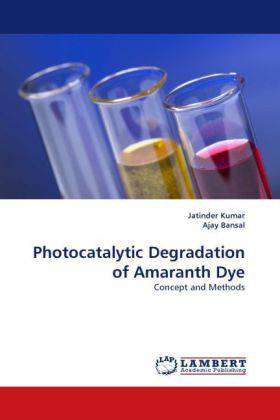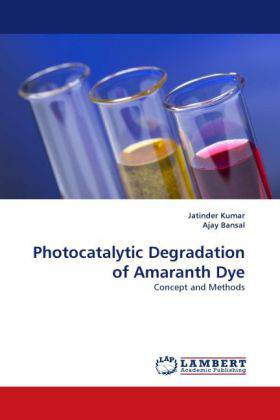
- Afhalen na 1 uur in een winkel met voorraad
- Gratis thuislevering in België vanaf € 30
- Ruim aanbod met 7 miljoen producten
- Afhalen na 1 uur in een winkel met voorraad
- Gratis thuislevering in België vanaf € 30
- Ruim aanbod met 7 miljoen producten
Zoeken
Photocatalytic Degradation of Amaranth Dye
Concept and Methods
Jatinder Kumar, Ajay Bansal
Paperback | Engels
€ 48,45
+ 96 punten
Omschrijving
The treatment of highly colored wastewater containing hazardous industrial chemicals and dyes is one of the growing needs of the present time. The conventional wastewater treatment does not always satisfactorily cleanse the wastewater containing dyes. In order to cleanse water of these extra-stable organics, so-called advance oxygen processes (AOPs) have been developed. The aim of these methods is to mineralize the pollutants to CO2, H2O and mineral acids and salts. Titanium dioxide photocatalysis belongs to the group of AOPs and has been extensively studied over the last 20 years. The use of TiO2 as slurries in wastewater treatment has some disadvantages: the separation of fine particles is slow and penetration of light is limited. These problems can be minimized by supporting TiO2 on various materials. The goals of present work were: (1) preparation of immobilized TiO2 films by various techniques and their characterization; (2) study the photocatalytic degradation of aqueous amaranth solution using the prepared TiO2 films; (3) study the combined effect of photodegradation and adsorption; (4) comparing the performance of prepared films.
Specificaties
Betrokkenen
- Auteur(s):
- Uitgeverij:
Inhoud
- Aantal bladzijden:
- 76
- Taal:
- Engels
Eigenschappen
- Productcode (EAN):
- 9783843366076
- Verschijningsdatum:
- 20/10/2010
- Uitvoering:
- Paperback
- Formaat:
- Trade paperback (VS)
- Afmetingen:
- 152 mm x 229 mm
- Gewicht:
- 122 g

Alleen bij Standaard Boekhandel
+ 96 punten op je klantenkaart van Standaard Boekhandel
Beoordelingen
We publiceren alleen reviews die voldoen aan de voorwaarden voor reviews. Bekijk onze voorwaarden voor reviews.











